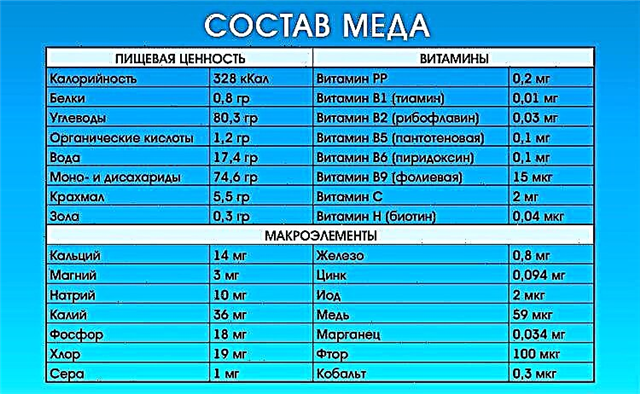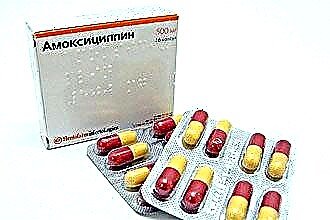A persistent runny nose rarely pays attention to, especially if it is not accompanied by an increase in temperature. They attribute it to a cold, mild allergies and other reasons. At best, nasal vasoconstrictor drugs are dripped. And they turn to a doctor only when it becomes completely difficult to breathe, some bumps are clearly felt in the nasal cavity. And they are very surprised when, after the examination, a disappointing diagnosis sounds - multiple nasal polyposis.
What are polyps
 If we briefly explain what polyps are, then we can say that this is a protective reaction of the body to chronic inflammation of the nasal mucous membranes. At first glance, this seems strange. But in fact, the human body finds different ways to protect itself from the negative effects of the environment.
If we briefly explain what polyps are, then we can say that this is a protective reaction of the body to chronic inflammation of the nasal mucous membranes. At first glance, this seems strange. But in fact, the human body finds different ways to protect itself from the negative effects of the environment.
The "starting point" for the development of polyposis is chronic sinusitis. In simple terms, it is a constant runny nose that occurs for various reasons. If you do not pay attention to it for a long time, then the function of the mucous membranes is impaired. They cannot constantly secrete a huge amount of mucus, they are gradually depleted and dry out.
Since the nasal passages and sinuses need constant hydration, the body tries to compensate for the lack of mucus by actively increasing the surface area of the mucous membranes. Small growths form in the nasal sinuses, which continue to grow and, not fitting already inside, protrude into the nasal cavity.
Nasal polyps are usually found at the stage when the patient comes to the doctor with a complaint: "I have a lump in my nose, what is it?" And this is the hypertrophied mucous membrane that has already fallen into the nasal cavity. How to cure nasal polyposis can only be decided by an otolaryngologist, since it directly depends on the cause of the growths, their size and location.
Causes and symptoms
There can be different reasons for the appearance of nasal polyps. Most often these are chronic diseases of the sinuses: sinusitis, sinusitis, frontal sinusitis. But even frequent colds, acute respiratory infections and acute respiratory viral infections, constantly accompanied by a runny nose, can provoke the development of nasal polyposis.
In second place among the causes of polyposis of the nasal cavity and paranasal sinuses, doctors call allergic reactions. They are characterized not only by abundant mucus production, but also by severe swelling of the mucous membranes. If the allergy is not dealt with, or it continues for a long time (for example, seasonal), then the mucous membranes begin to grow, forming nasal polyps.
Difficulty breathing and profuse mucus production can occur with congenital or acquired curvature of the nasal septa. Too narrow a nasal passage can also create a problem if not regularly monitored for cleanliness. Often, polyposis is diagnosed in patients with bronchial asthma.
 Frankly speaking, doctors still cannot clearly identify one or several reasons provoking the appearance of polyps. Therefore, there is a chance to diagnose nasal polyps at an early stage only if you consult a doctor in time. This should be done if you find yourself with the following symptoms:
Frankly speaking, doctors still cannot clearly identify one or several reasons provoking the appearance of polyps. Therefore, there is a chance to diagnose nasal polyps at an early stage only if you consult a doctor in time. This should be done if you find yourself with the following symptoms:
- constantly having difficulty breathing;
- feeling of something "extra" in the nose;
- decreased sense of smell;
- frequent unreasonable sneezing;
- nasal congestion and snoring at night;
- feeling that something is interfering with swallowing;
- frequent pain in the frontal region of the head;
- a bursting sensation in the sinuses;
- from time to time appearing yellow-green snot.
In the early stages, treatment of nasal polyposis is quicker and easier than when the lumps in the nose are already overgrown and blocking the nasal passages.
Diagnostics
The first specialist to whom you need to go if you suspect that polyps in your nose have arisen is an otolaryngologist. After an external examination, he prescribes the necessary tests and studies that will help to deliver an unmistakable final diagnosis.
 First of all, an instrumental examination of the nasopharynx and careful palpation are carried out. Obligatory stages of the examination are blood and sputum tests, x-rays of the nasal sinuses. Laboratory tests will make it possible to establish whether there is an infection in the body, what kind of infection and whether active inflammatory processes are currently taking place.
First of all, an instrumental examination of the nasopharynx and careful palpation are carried out. Obligatory stages of the examination are blood and sputum tests, x-rays of the nasal sinuses. Laboratory tests will make it possible to establish whether there is an infection in the body, what kind of infection and whether active inflammatory processes are currently taking place.
On an X-ray, you can see the size of the polyps, the direction of their growth, approximately determine the density. Often the patient is recommended to do a computed tomography. It gives a sharper, more detailed picture than x-rays. If you suspect malignant tumors, or if there is a question about surgical intervention, a biopsy is done.
Only on the basis of all the data obtained as a result of the examination, the doctor can diagnose nasal polyposis and choose a treatment strategy. At an early stage, a conservative option can still be effective.
But if the polyps are large, interfere with normal breathing, provoke constant inflammatory processes, the question of their removal is raised.
What is the danger
It would seem that if nasal polyps are just an overgrown mucous membrane, then it cannot pose a danger to the body. Moreover, at an early stage of their appearance, the patient does not experience severe discomfort and pain. Therefore, people are in no hurry to see a doctor, having found a small bump in their nose. But this opinion is erroneous and inaction can lead to serious complications.
What are dangerous polyps in the nose, in the first place, is the fact that in the absence of treatment, they are actively growing. After some time, they can completely block the nasal passage, go to the nasopharynx and even degenerate into malignant neoplasms.
The hypertrophied mucous membrane replaces the olfactory receptors, and a person can completely lose their sense of smell. Constant breathing through the mouth opens the gate of infection for an unhindered attack of the upper respiratory tract, since they were previously protected by the nasal passages lined with villi. Accordingly, the incidence of acute respiratory infections and acute respiratory viral infections is increasing, which can lead to chronic pharyngitis and bronchitis. That is why, if a polyp in the nose is found, treatment should be started immediately.
Conservative treatment
It is possible to eliminate polyps that have already appeared with alternative methods of treatment only at a very early stage. And since the diagnosis on it is very difficult, the chances of a cure by this method are scanty. Therefore, it is best not to experiment and not wait for the neoplasms to grow, but to resort to traditional treatment.
 Conservative treatment of polyps, when it is still possible, should be comprehensive, which will simultaneously eliminate the causes of their appearance, prevent proliferation and, if possible, reduce their size. Therefore, the course of therapy includes:
Conservative treatment of polyps, when it is still possible, should be comprehensive, which will simultaneously eliminate the causes of their appearance, prevent proliferation and, if possible, reduce their size. Therefore, the course of therapy includes:
- taking medications: antibacterial, antihistamines, anti-inflammatory, antifungal, etc.;
- physiotherapeutic procedures: quartzing, electrophoresis, ultrasound or laser therapy;
- a strict diet that excludes chemical dyes, irritants and allergens;
- the use of immunomodulators;
- treatment of the nasal cavity and sinuses with antiseptic solutions.
The course of treatment is on average 2-3 weeks. After passing it, a second examination is done, according to the results of which we can talk about the effectiveness or ineffectiveness of this method.
If conservative treatment does not lead to noticeable improvements, the question of surgical removal of polyps is raised.
Indications for surgery
Indications for surgical removal of polyps are persistent pyoinflammatory processes, large polyps and impaired respiratory functions. But the operation is prescribed only after a thorough preliminary examination, which makes it possible to exclude possible contraindications and avoid possible complications.
For the operation, a diagnostic examination is not enough. Before the procedure, several blood tests are done: for coagulability, biochemical and general. If an allergic reaction is suspected, tests can be made to determine the tolerance of the drugs that will be used during the operation. A consultation with an anesthesiologist is obligatory, who will discuss the form of anesthesia with the patient.
Direct contraindications to surgical intervention are: pregnancy, blood clotting disorders, cardiovascular failure, intolerance to anesthesia. An operation is not performed against the background of an exacerbation of any chronic diseases, during menstruation, within 2 weeks after acute respiratory infections or acute respiratory viral infections.
Removal procedure
 In most cases, removal of nasal polyps is performed on an outpatient basis. In the first hours after the operation, the patient is under medical supervision. If there is no severe bleeding and other complications, then the patient is given the necessary recommendations, and he goes home.
In most cases, removal of nasal polyps is performed on an outpatient basis. In the first hours after the operation, the patient is under medical supervision. If there is no severe bleeding and other complications, then the patient is given the necessary recommendations, and he goes home.
The operation itself is performed by two main methods: classical (using a loop tool) or high-tech (laser burning). The laser method of removal is much safer and more effective than the classical one, but many are stopped by the rather high cost of the procedure.
In the classic version, the operation looks like this:
- Thorough rinsing of the mouth and treatment of the nose with an antiseptic solution is carried out.
- The patient is seated in an operating chair, his head is securely fixed.
- Anesthesia is given (usually local anesthesia, but sometimes intravenous anesthesia is used).
- The polyp is captured by a sharp-edged steel loop and cut sharply.
- After the blood has drained off, the nose is again treated with an antiseptic.
- The nasal passages are closed with sterile gauze swabs.
The operation takes no more than 15 minutes, although it is a rather unpleasant procedure. In the modern version, everything happens the same. Only polyps are burned out with a laser beam. At the same time, there is practically no bleeding, but after the anesthesia has passed, there is strong pain, as after a deep burn.
Rehabilitation period
 The period of complete rehabilitation after removal of polyps is up to 28 days. During this time, the wound has time to completely heal, and the mucous membrane is partially restored. But, as after any other operation, proper care and behavior in the first day or two after the procedure is especially important.
The period of complete rehabilitation after removal of polyps is up to 28 days. During this time, the wound has time to completely heal, and the mucous membrane is partially restored. But, as after any other operation, proper care and behavior in the first day or two after the procedure is especially important.
For the first few hours after the operation, the nasal passages should be closed with sterile tampons. You can only pull them out to replace those that are too blood-soaked. In the normal case, bleeding stops within a couple of hours.
Do not gargle your throat and nose for 24 hours. It is necessary to avoid sudden changes in temperature, including not drinking hot drinks (above body temperature). The first day after the operation, it is better not to eat solid food so that its particles do not irritate the nasopharynx and do not get into the nasal cavity. Everything spicy, sour, and salty will have to be excluded from the menu for a couple of weeks.
For several days, it is necessary to limit active physical activity so that nosebleeds do not open. It is necessary to monitor the cleanliness and humidity of the air in the room so that the damaged mucous membranes are not contaminated and do not dry out.
In the first days after the operation, it is better to sleep on a high pillow, so that with the possible release of blood or ichor it does not flow down the throat.
Prophylaxis
Since a nasal polyp does not form in one day and you already know the possible risks, it is much easier to prevent their development than to treat for a long time or resort to the help of a surgeon. Simple preventive measures will help to do this:
 strengthening immunity in all possible ways: taking multivitamins and immunomodulators, hardening procedures, breathing exercises;
strengthening immunity in all possible ways: taking multivitamins and immunomodulators, hardening procedures, breathing exercises;- compulsory follow-up treatment to the end of all respiratory diseases - there is no such phenomenon as "residual rhinitis";
- maintaining optimal temperature and humidity in those rooms where you spend a lot of time;
- regular wet cleaning of living and working premises;
- periodic inspection of premises for the presence of possible allergens or irritants and their elimination;
- mandatory intake of antihistamines with a tendency to allergic reactions;
- maintaining chronic diseases in a state of stable remission;
- see a doctor for any breathing difficulties, pain in the nose or detection of neoplasms.
Quitting smoking, including electronic cigarettes, plays an important role in the prevention of polyp formation. Nicotine causes constant dryness and irritation of the nasal mucosa, which sooner or later leads to the development of the disease.

 strengthening immunity in all possible ways: taking multivitamins and immunomodulators, hardening procedures, breathing exercises;
strengthening immunity in all possible ways: taking multivitamins and immunomodulators, hardening procedures, breathing exercises;

